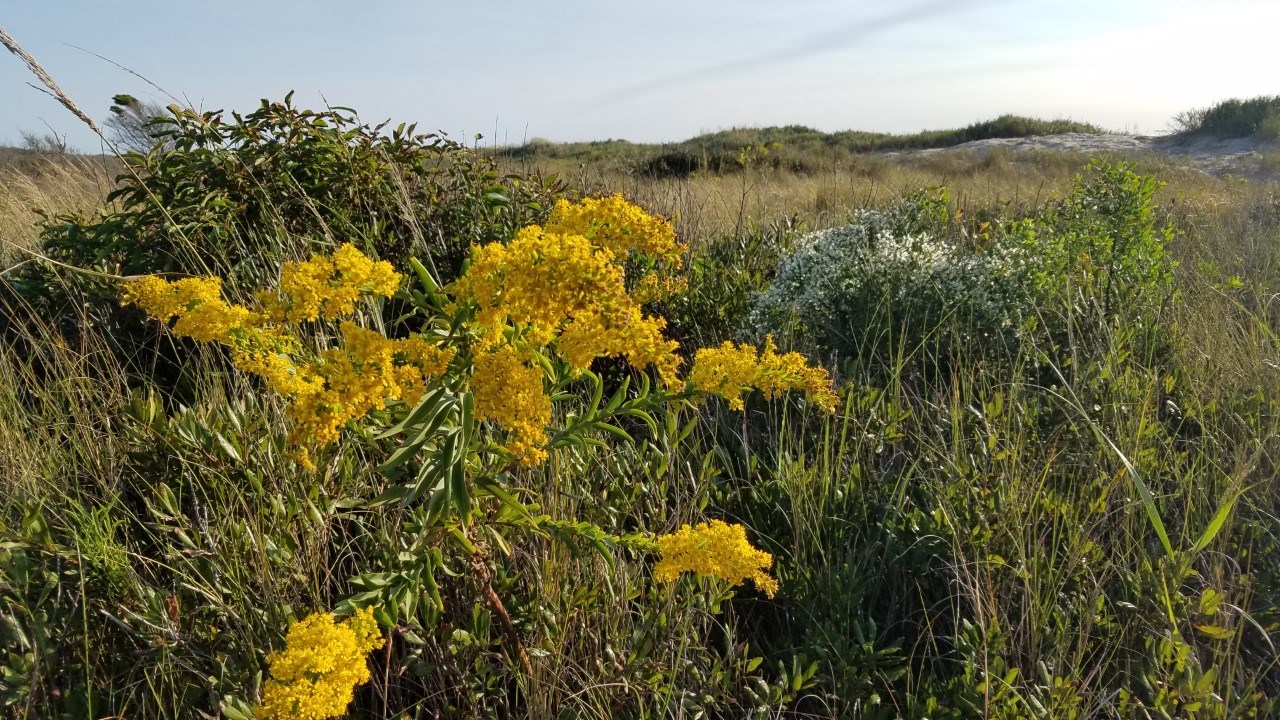
NPS Photo 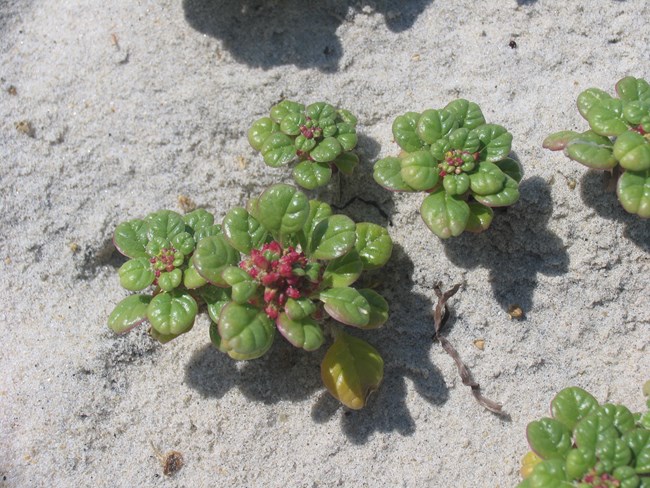
NPS Photo Beach habitats tend to be sparsely vegetated, with a scattering of the few species that are specialized for survival on exposed sands. Beach-dwelling wildflowers tend to grow low to the ground and have tough, fleshy leaves to avoid water loss and withstand salt and sand blown by strong winds. One such species is the federally threatened seabeach amaranth (Amaranthus pumilus), which grows in mats of over 1 foot in diameter on the beaches of Atlantic coast barrier islands. Assateague Island is the only place in Maryland where seabeach amaranth is found, and an active monitoring and management program for the species is currently underway at the park. 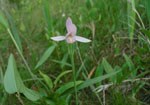
NPS photo Other rare plants, including two species of orchids, can be found in Assateague's damp forests and wetlands. The crested fringed orchid (Platanthera cristata) lives in damp pine forests and has bright orange flowers that appear in late summer. Rose pogonia (Pogonia ophioglossoides) plants display a single pink flower in late spring and can be found in a variety of moist areas, including sphagnum bogs, swamps, meadows, and forests. 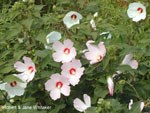
Robert and Jane Whitaker Many of Assateague's wildflowers species flourish in disturbed areas such as roadsides. In summer, hundreds of rose mallow (Hibiscus moscheutos) line the entrance road with large white blooms. These are joined by collections of yellow, white, purple, or pink flowers produced by various members of the aster family (Asteraceae). 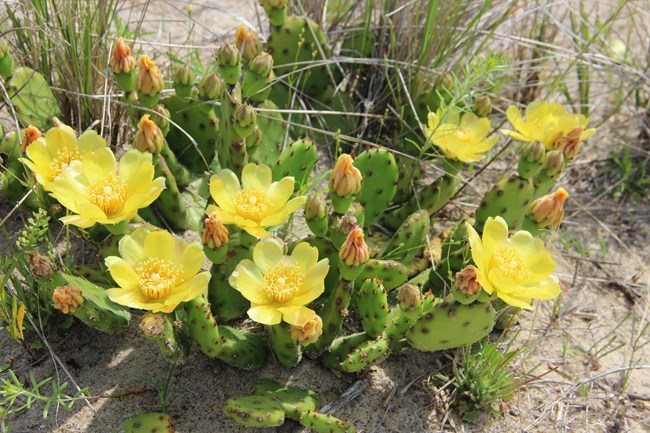
NPS Photo Assateague's wildflowers are as varied as the changing conditions of the island. They constitute important components of the island's natural systems, while also providing beauty and enjoyment to the Seashore's many visitors. |
Last updated: June 5, 2021
